The frame and how to use it
It’s difficult to separate the frame from the composition of your shot – but I like to think of it as two elements, as it keeps me aware of the edges of the shot, and how they impact on the composition, which concentrates on what is actually in the shot.
As I mentioned on the previous page, when photography and painting met and began to influence each other the dynamic potential of the frame became clear. The frame can suggest what is outside the shot, or it can focus the eye (and the mind) on what is within the frame. It can create a sense of being enclosed, even trapped – or it can give a feeling of expansiveness, and life beyond the image you are looking at. Whether you are thinking of a ‘still life’, a portrait or a landscape, these subtle effects can be invoked.
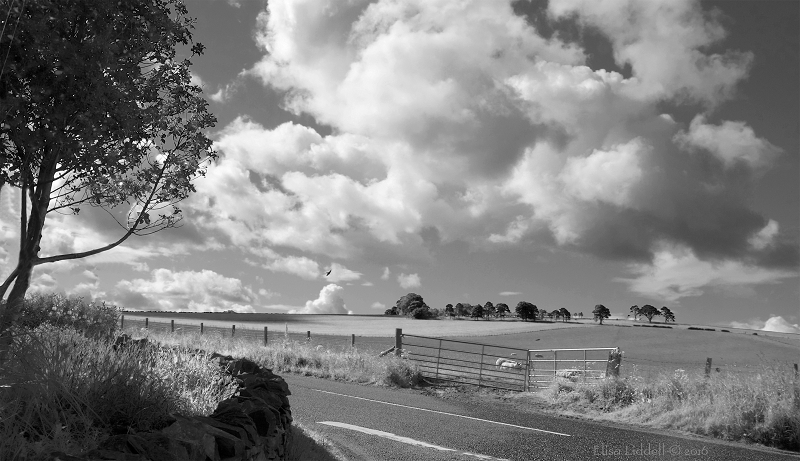
Here the edges of the frame are actively drawing the attention of the viewer. The wall and tree on the left not only delineate the edge of the frame, they also invite you to add awareness of how they extend beyond the frame, so you can imagine the entire road leading up to this junction. Similarly the actual road fills half of the bottom of the frame. Again you are invited as the viewer to extend that and imagine the road we are about to join. And the sky fills a large part of the frame too – which is left open for the viewer to extend beyond the frame’s edges. The overall effect of this framing choice is to give a sense of expansiveness, of open air, the open road, and freedom.

Compare “The Crossroads” with this shot of the woodland walk at Fyvie Castle. The edges of the frame are used here to enclose the view, and concentrate the eye on the gate. The feeling is less open, more like a tunnel. You could imagine the trees above, from the overhanging branches and substantial trunks, but somehow your eye and mind have been encouraged to focus elsewhere by the way the shot is framed.
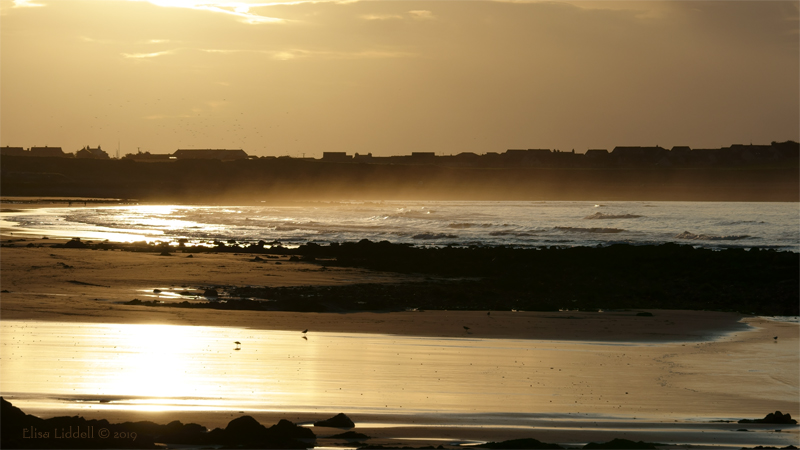
Another landscape shot where the viewer is invited to look beyond the frame. The horizontal lines cry out for the imagination to extend them to include the sea to the right and the shore to the left – the land with houses beyond and the foreground rocks – and the sun that is out of frame, though we can see it’s impact throughout the entire image! Although the sun is setting, and the day drawing to a close, there is a great sense of openness and expansiveness that the use of the frame has created.
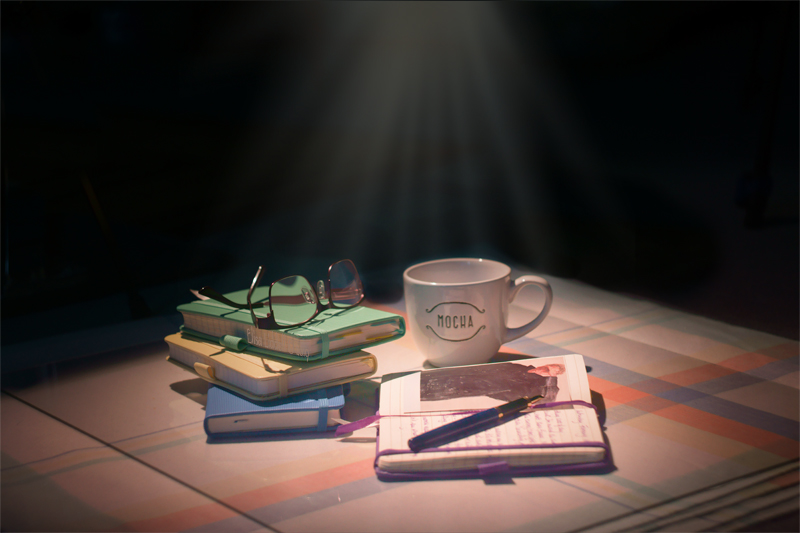
And here, with a ‘still life’ the frame is used to close in the view, and create a sense of stillness and inward looking. I added a dark vignette to emphasise the enclosed feeling, as it is a response to this poem by Stephen Dunn:
A Secret Life
“When you write late at night
it’s like a small fire
in a clearing, it’s what
radiates and what can hurt
if you get too close to it.”

Even in a tight macro close-up you can be invited by the framing to complete the mirror, follow the lines of the ceramic tiles, and the stem of the pansy. It is an active, open frame that gives a sense of lightness to the image.
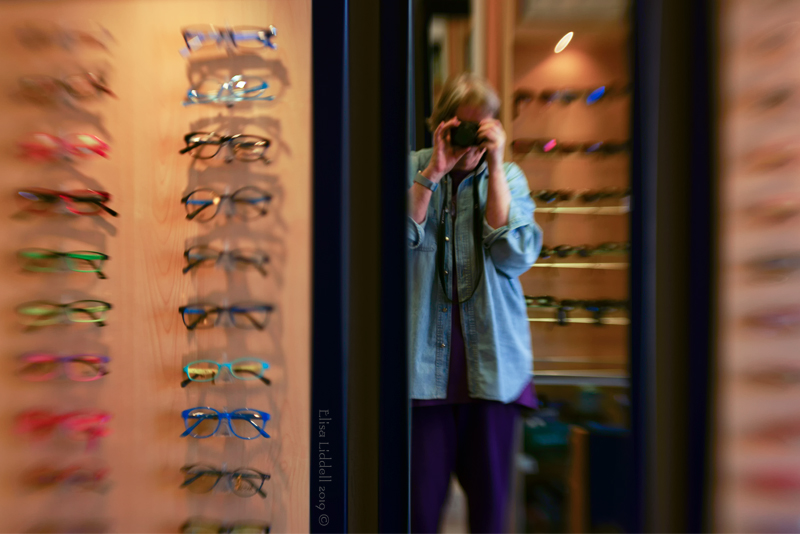
Here the lens I used helps to reinforce the framing to close in. The blurring created by the Lensbaby optic encourages the focus to remain inward looking.
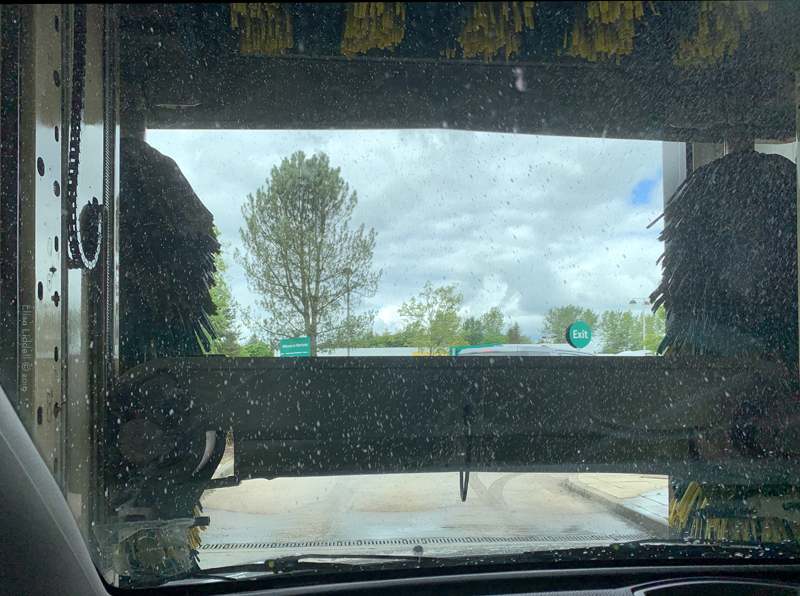
And there is always a frame within the frame to add yet more dynamic options!
Here the tension is especially pleasing, as the dark elements that surround the view beyond also invite us to extend our knowledge outside the frame. The hints of the interior of the car place us outside the frame, and the structural forms of the car wash allow us to continue the experience of the machinery rolling over the car body! And the bar across our view gives tension to the image, as it is barring our view and our exit. Beyond the bar (escape) is the sunshine and the outside world beckoning us.
So the frame is a vital and dynamic part of the conversation that goes on between the photographer and the viewer. Although it is difficult to separate it from the actual content of the image, it is valuable to keep the awareness of the frame as a way to communicate our visual message.
Back to Back to Basics 1
Back to the Zen Camera cover page
Flickr holds Elisa’s online Photo Gallery
© 2019 Elisa Liddell
